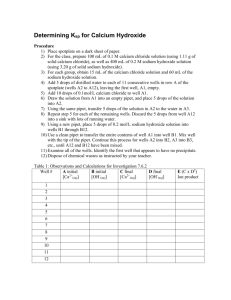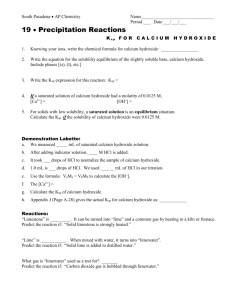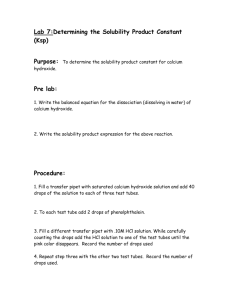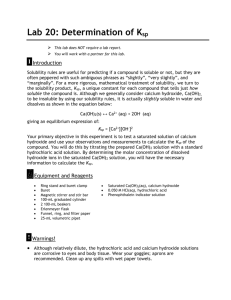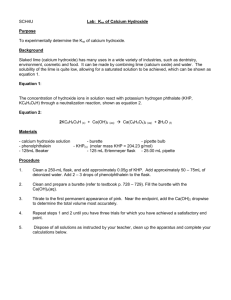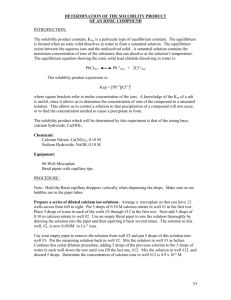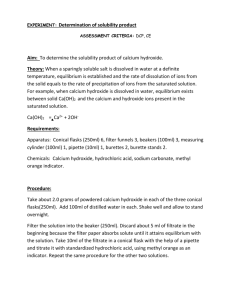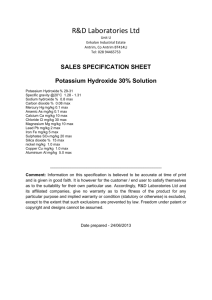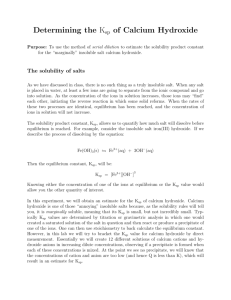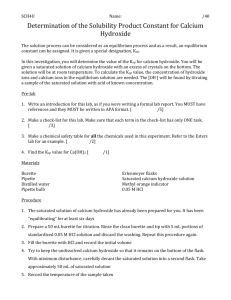Purpose: To determine the solubility product constant (Ksp) for
advertisement
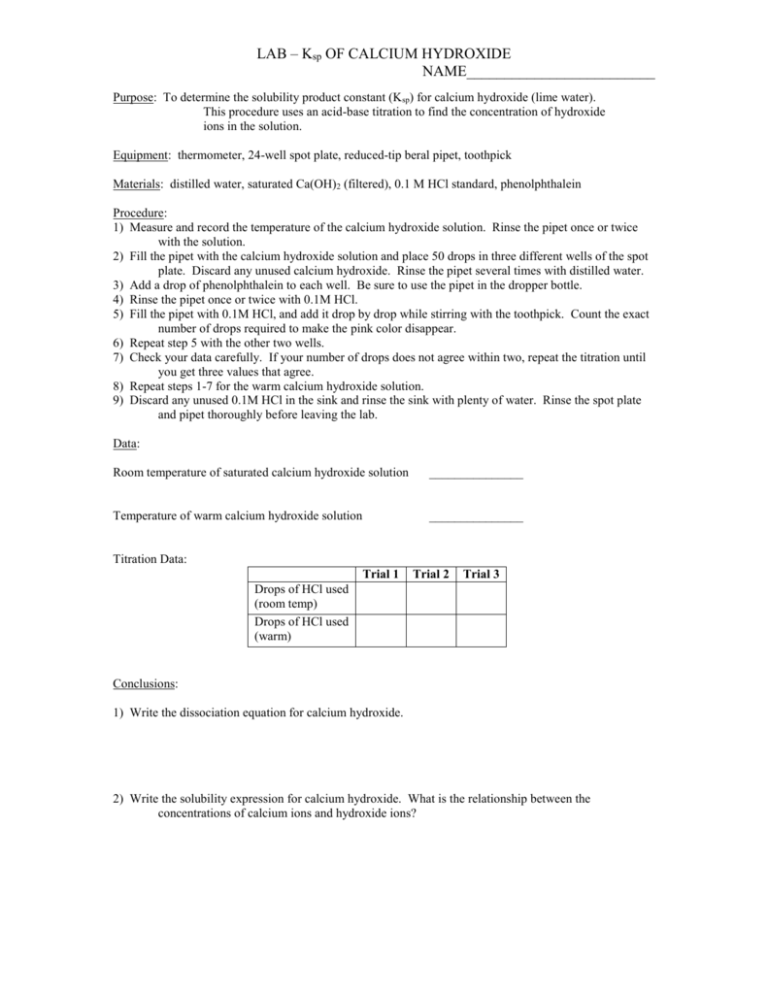
LAB – Ksp OF CALCIUM HYDROXIDE NAME_________________________ Purpose: To determine the solubility product constant (Ksp) for calcium hydroxide (lime water). This procedure uses an acid-base titration to find the concentration of hydroxide ions in the solution. Equipment: thermometer, 24-well spot plate, reduced-tip beral pipet, toothpick Materials: distilled water, saturated Ca(OH)2 (filtered), 0.1 M HCl standard, phenolphthalein Procedure: 1) Measure and record the temperature of the calcium hydroxide solution. Rinse the pipet once or twice with the solution. 2) Fill the pipet with the calcium hydroxide solution and place 50 drops in three different wells of the spot plate. Discard any unused calcium hydroxide. Rinse the pipet several times with distilled water. 3) Add a drop of phenolphthalein to each well. Be sure to use the pipet in the dropper bottle. 4) Rinse the pipet once or twice with 0.1M HCl. 5) Fill the pipet with 0.1M HCl, and add it drop by drop while stirring with the toothpick. Count the exact number of drops required to make the pink color disappear. 6) Repeat step 5 with the other two wells. 7) Check your data carefully. If your number of drops does not agree within two, repeat the titration until you get three values that agree. 8) Repeat steps 1-7 for the warm calcium hydroxide solution. 9) Discard any unused 0.1M HCl in the sink and rinse the sink with plenty of water. Rinse the spot plate and pipet thoroughly before leaving the lab. Data: Room temperature of saturated calcium hydroxide solution _______________ Temperature of warm calcium hydroxide solution _______________ Titration Data: Trial 1 Trial 2 Trial 3 Drops of HCl used (room temp) Drops of HCl used (warm) Conclusions: 1) Write the dissociation equation for calcium hydroxide. 2) Write the solubility expression for calcium hydroxide. What is the relationship between the concentrations of calcium ions and hydroxide ions? LAB – Ksp OF CALCIUM HYDROXIDE NAME_________________________ 3) Calculate the average number of drops of HCl used for both trials. 4) Calculate the molarity of the hydroxide ions for both trials. MaVa = MbVb Ma (molarity of acid)= 0.10 M Va (volume of acid) = #3 Vb (volume of base) = 50 drops 5) Using #4, calculate the concentration of calcium ions for both trials. 6) Using the values from #4 and #5, find the solubility product expression (K sp) for calcium hydroxide for both trials. 7) The accepted value for #6 at 25oC is 8.0 x 10-6. Find the percent error of your room temp results. 8) What happens to the Ksp as the temperature increases?
